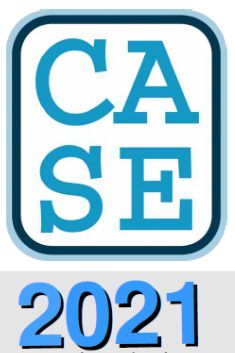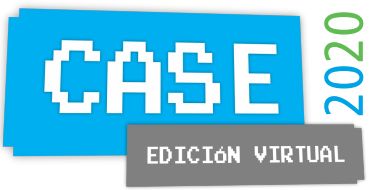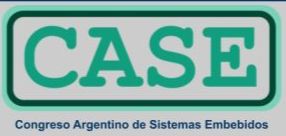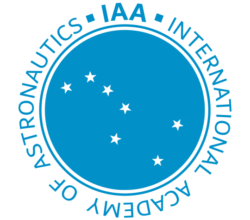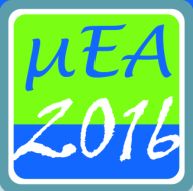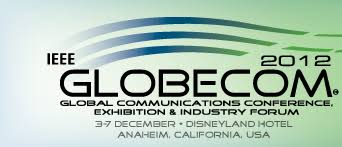Comunicaciones - Areas de Desarrollo
Redes de Telefonía Móvil
Mobile Networks
Internet de las cosas (IoT)
Internet of Things (IoT)
Redes de Datos
Data Networks
Radio definida por software (SDR)
Software Defined Radio
Redes de Telefonía Móvil
I+D en redes 2G - 5G
Las redes de telefonía móvil se encuentran en constante evolución, abarcando una gran variadad de servicios. En este contexto, nuestro Grupo realiza tareas de I+D para brindar soluciones a la sociedad, así como con fines didácticos. Asimismo, se trabaja en los estudios que llevarán a la definición de la arquitectura de futuras redes 5G.
Mobile Networks
R&D in 2G-5G Networks
Mobile networks are constantly evolving, covering a wide variety of services. In this context, our Group carries out R&D tasks to provide solutions to society, to explore next-gen challenges, as well as for educational purposes. In particular, open platforms and remote labs are studied and used for our goals.
Internet de las Cosas (IoT)
Redes de sensores para monitoreo ambiental
Mediante protocolos aplicables a redes de sensores, tales como IEEE 802.15.4, LoRA y Narrowband IoT, se simulan e implementan redes de sensores aplicables a control de variables de interés ambiental. Se diseñaron algoritmos eficientes para el enrutamiento de los datos en la red, así como el post-procesamiento de estos datos para obtener información relevante para la toma de acciones.
Internet of Things (IoT)
Sensor networks for environment monitoring
Using protocols applicable to sensor networks, such as IEEE 802.15.4, LoRA and Narrowband IoT, sensor networks are simulated and implemented for the control of variables of environmental interest. Efficient routing algorithms are designed, and post-processing of this data is explored.
Redes de Datos
Procesamiento en hardware reconfigurable
Las redes de datos incorporan actualmente una gran variedad de funciones de procesamiento a nivel de paquetes. En particular, nuestro grupo realiza actividades en esta área aplicando tecnología de hardware reconfigurable (FPGAs) combinadas con software.
Data Networks
Processing on reconfigurable hardware
Data networks currently incorporate a wide variety of line-speed processing functions at signal and packet layers. In particular, our group carries out activities in this area by applying reconfigurable hardware technology (FPGAs) and SoCs.
Radio Definida por Software (SDR)
Diseño e implementación de módulos DSP
Los sistemas de procesamiento digital tienen en la actualidad la capacidad para reemplazar cadenas de procesamiento en comunicaciones, tradicionalmente implementadas mediante hardware analógico o digital dedicado. Nuestro grupo realiza tareas de I+D en esta área, implementando y evaluando sistemas para una amplia variedad de aplicaciones.
Software-Defined Radio (SDR)
Design and implementation of DSP modules
Fully-programmable DSP systems currently have the capacity to replace processing chains traditionally implemented through dedicated analog or digital hardware. Our group carries out R&D tasks in this area, implementing and evaluating systems for a wide variety of applications.
Responsables académicos - Academic managers
Dr. Ing. Guillermo Gaston Riva
Email:
griva@frc.utn.edu.ar
Dr. Ing. Carlos Zerbini
Email:
czerbini@frc.utn.edu.ar
Jornadas y Congresos - Recent Conference Publications
Congreso Argentino de Sistemas Embebidos (CASE 2022)
Open and Configurable Channelization for Future Software-Defined Radio
Nowadays, signal demodulation chains used in Software-Defined Radio (SDR) receivers involve analog and digital sections. For economical reasons, the latter tends to gain ground over the analog one, and typically involves a channelization module based on Digital Down-Converters (DDCs). Given the current trend towards all-digital receivers based on direct RF sampling, the channelization architecture will become a critical issue, requiring open and flexible designs to cope with its challenges. As contribution, we evaluate two open alternatives for DDCs implementation on field-programmable gate arrays (FPGAs), one implemented in high-level language and the other one through hardware description language (HDL). Together, they provide flexibility for parameterization, as well as hardware-level optimization.
MORE INFOCongreso Argentino de Sistemas Embebidos (CASE 2022)
Open and Configurable Channelization for Future Software-Defined Radio
Nowadays, signal demodulation chains used in Software-Defined Radio (SDR) receivers involve analog and digital sections. For economical reasons, the latter tends to gain ground over the analog one, and typically involves a channelization module based on Digital Down-Converters (DDCs). Given the current trend towards all-digital receivers based on direct RF sampling, the channelization architecture will become a critical issue, requiring open and flexible designs to cope with its challenges. As contribution, we evaluate two open alternatives for DDCs implementation on field-programmable gate arrays (FPGAs), one implemented in high-level language and the other one through hardware description language (HDL). Together, they provide flexibility for parameterization, as well as hardware-level optimization.
Congreso Argentino de Sistemas Embebidos (CASE 2021)
Simulación de la Interfaz Inalámbrica para Comunicaciones Móviles LTE
La creciente demanda de servicios sobre redes móviles y el limitado espectro de radio disponible requieren del desarrollo de mecanismos para un uso más eficiente. El desarrollo de herramientas para implementar y evaluar redes móviles de forma flexible es de gran importancia para validar nuevas estrategias. En este trabajo se analizan y comparan implementaciones abiertas para la simulación y emulación de redes de comunicaciones móviles. Se hace especial foco en la evaluación de diferentes modelos de canal, en las mediciones obtenidas y su visualización, y en la capacidad de tráfico.
MORE INFOCongreso Argentino de Sistemas Embebidos (CASE 2021)
Simulation of Air Interface in LTE Mobile Communications
The growing demand for services over mobile networks and the limited radio spectrum available require the development of mechanisms for more efficient use. The development of tools to implement and evaluate mobile networks in a flexible way is of great importance to validate new strategies. In this work, open implementations for the simulation and emulation of mobile communications networks are analyzed and compared. Special focus is placed on the evaluation of different channel models, on the measurements obtained and their visualization, and on traffic capacity.
Congreso Argentino de Sistemas Embebidos (CASE 2020)
Análisis de Protocolos en Redes LTE mediante Plataforma OpenAirInterface
El avance en tecnologÃas de radio definida por software (SDR) ha posibilitado su efectiva aplicación en sistemas de 4G y 5G. OpenAirInterface es un proyecto colaborativo para evaluar técnicas avanzadas de procesamiento en comunicaciones, permitiendo el acceso a la academia con fines didácticos y de investigación. En este trabajo se exponen resultados en la emulación de comunicación LTE entre un equipo de usuario y una celda base, demostrando sus cualidades para analizar procesos en sus distintas capas. Estas experiencias son directamente aplicables a un escenario real de comunicación inalámbrica.
MORE INFOCongreso Argentino de Sistemas Embebidos (CASE 2020)
Protocol Analysis in LTE Newtworks with OpenAirInterface Platform
The advances in software defined radio (SDR) technologies have enabled its effective application in 4G and 5G systems. OpenAirInterface is a collaborative project aimed at evaluating advanced communications processing techniques, allowing access to academia for teaching and research purposes. This work presents results in the emulation of LTE communications between a user equipment and a base cell, demonstrating its features to analyze processes in its different layers. These experiences are directly applicable to a real wireless communication scenario.
X Southern Programmable Logic Conference (SPL 2019)
Packet Core in Mobile Networks: FPGA-based ApproachR
Current mobile networking architecture consists of two main components: Radio-Access Network (RAN) and Evolved Packet Core Network (EPC). In particular, current EPC architecture faces performance issues when considering future needs regarding number of devices and traffic types. To solve these problems in current and next-gen (5G) networks, Software- Defined Networking (SDN) and its associated protocol OpenFlow has been applied in previous work. However, these proposals are solely based on software which poses performance constraints. In this paper, we propose to use NetFPGA as hardware accelerator for current and next-gen packet core in mobile networks.
MORE INFOX Southern Programmable Logic Conference (SPL 2019)
Packet Core in Mobile Networks: FPGA-based Approach
Current mobile networking architecture consists of two main components: Radio-Access Network (RAN) and Evolved Packet Core Network (EPC). In particular, current EPC architecture faces performance issues when considering future needs regarding number of devices and traffic types. To solve these problems in current and next-gen (5G) networks, Software- Defined Networking (SDN) and its associated protocol OpenFlow has been applied in previous work. However, these proposals are solely based on software which poses performance constraints. In this paper, we propose to use NetFPGA as hardware accelerator for current and next-gen packet core in mobile networks.
Congreso Argentino de Sistemas Embebidos (CASE 2019)
Mediciones en Celdas 4G LTE con TecnologÃa SDR
En este trabajo se presentan alternativas de medición sobre señales de telefonÃa celular 4G LTE mediante herramientas Software Defined Radio (SDR) de código abierto. Por un lado, se explora el estado del arte, describiendo los alcances técnicos de las herramientas, las capas sobre las cuales se destacan, y sus campos de aplicación. Por otro lado, se analizan las mediciones más comunes sobre celdas LTE, y se plantea un caso de aplicación concreto.
MORE INFOCongreso Argentino de Sistemas Embebidos (CASE 2019)
Mesurement of 4G LTE Base Cells with SDR Technology
This work presents measurement alternatives for 4G LTE cell phone signals using open source Software Defined Radio (SDR) tools. On the one hand, the state of the art is explored, describing the technical scope of the tools, the layers on which they stand out, and their fields of application. On the other hand, the most common measurements on LTE cells are analyzed, and a specific application case is proposed.
Congreso Argentino de Sistemas Embebidos (CASE 2019)
Extendiendo la Cobertura del Servicio SMS GSM en Ãreas Rurales mediante TecnologÃa LPWAN
Los operadores de telefonÃa móvil proveen servicios de comunicación en centros urbanos y a lo largo de rutas y su entorno. En el último caso, la cobertura puede alcanzar algunos kilómetros desde las rutas campo adentro según la tecnologÃa disponible. En este sentido, los habitantes de zonas rurales tienen en su mayorÃa limitaciones o falta de servicio de telefonÃa móvil. Este trabajo propone una solución para extender la cobertura del servicio de mensaje corto basada en tecnologÃas de largo alcance y bajo consumo.
MORE INFOCongreso Argentino de Sistemas Embebidos (CASE 2019)
Extending Coverage for SMS Service in Rural Areas with LPWAN Technology
Mobile telephone operators provide communication services in urban centers and along routes and their surroundings. In the latter case, coverage can reach a few kilometers from inland routes depending on available technology. In this sense, the inhabitants of rural areas mostly have limitations or lack of mobile phone service. This work proposes a solution to extend the coverage of the short message service based on long-range and low-power technologies.
Congreso Argentino de Sistemas Embebidos (CASE/SASE 2018)
First Steps in the Development of a LoRaWAN Testbench
The development of Low Power Wide Area Networks (LPWANs) based on novel communication standards such as LoRaWAN has increased exponentially to provide network infrastructure to the large number of Internet of Things (IoT) solutions ...
MORE INFOCongreso Argentino de Sistemas Embebidos (CASE/SASE 2018)
First Steps in the Development of a LoRaWAN Testbench
The development of Low Power Wide Area Networks (LPWANs) based on novel communication standards such as LoRaWAN has increased exponentially to provide network infrastructure to the large number of Internet of Things (IoT) solutions ...
1st IAA Latin American Symposium on Small Satellites - GInTEA/LCD-UNC
Enhancing Contact Graph Routing Forwarding Performance for Segmented Satellites Architectures
Recently, the Argentinean Space Agency (CONAE) has developed a concept known as Segmented Architecture in which sets of satellites will form a series of missions with common components and characteristics and the ability to interact with each other and share resources. The development of this architecture...
MORE INFO1st IAA Latin American Symposium on Small Satellites - GInTEA/LCD-UNC
Enhancing Contact Graph Routing Forwarding Performance for Segmented Satellites Architectures
Recently, the Argentinean Space Agency (CONAE) has developed a concept known as Segmented Architecture in which sets of satellites will form a series of missions with common components and characteristics and the ability to interact with each other and share resources. The development of this architecture...
Simposio Latinoamericano de Infraestructura, Hardware y Software (SLIHS), (JAIIO 2017) - GInTEA/LCD-UNC
Spectrum Coexistence of LEO and GSO Networks: An Interference-Based Design Criteria for LEO Inter-Satellite Links
As small satellites become more capable through miniaturized electronics and on-board processing, constellations of low-cost satellites lunched in Low- Earth Orbit (LEO) become feasible. The increase in the number of LEO satellites drives ...
MORE INFOSimposio Latinoamericano de Infraestructura, Hardware y Software (SLIHS), (JAIIO 2017) - GInTEA/LCD-UNC
Spectrum Coexistence of LEO and GSO Networks: An Interference-Based Design Criteria for LEO Inter-Satellite Links
As small satellites become more capable through miniaturized electronics and on-board processing, constellations of low-cost satellites lunched in Low- Earth Orbit (LEO) become feasible. The increase in the number of LEO satellites drives ...
VII Congreso de Microeletrónica Aplicada (uEA 2016)
SDR con GNU Radio: de la TeorÃa a la Aplicación
Abstract: Actualmente, las técnicas de radio definida por software permiten implementar sistemas de comunicaciones reconfigurables y eficientes. En este contexto, la combinación de hardware de bajo costo con las librerÃas GNU radio...
MORE INFOVII Congreso de Microeletrónica Aplicada (uEA 2016)
SDR with GNU Radio: from Theory to Application
Currently, software-defined radio techniques allow the implementation of reconfigurable and efficient communications systems. In this context, the combination of low-cost hardware with the GNU radio libraries...
VII Congreso de Microelectrónica Aplicada (uEA 2016)
Analizando Comunicaciones GSM con Radios Definidas por Software (SDR)
Abstract: Actualmente, el uso de redes de telefonÃa móvil GSM es habitual para la mayorÃa de las personas. Desde el momento en que se activa un teléfono móvil se establece un intercambio permanente de datos con la celda de servicio...
MORE INFOVII Congreso de Microelectrónica Aplicada (uEA 2016)
Exploring GSM Communications with Software-Defined Radio (SDR)
Nowadays, the use of GSM mobile telephone networks is common for most people. From the moment a mobile phone is activated, a permanent data exchange is established with the serving cell...
2013 IEEE Congress on Evolutionary Computation (CEC 2013) - GInTEA/LCD-UNC
Bio-inspired in-network filtering for wireless sensor monitoring systems
Abstract: Packet processing is becoming much more challenging as networks evolve towards a multi-service platform. In particular, packet classification demands smaller processing times as data rates increase. To successfully meet this requirement, hardware-based classification architectures have become an area of extensive research. Even if Field Programmable Logic Arrays (FPGAs) have emerged as an interesting technology for implementing these architectures, existing proposals either exploit maximal concurrency with unbounded resource consumption, or base the architecture on distributed RAM memory-based schemes which strongly undervalues FPGA capabilities. Moreover, most of these proposals target best-match classification and are not suited for high-speed updates of classification rulesets. In this paper, we propose a new approach which exploits rich logic resources available in modern FPGAs while reducing memory consumption. Our architecture is conceived for multi-match classification, and its mapping methodology is naturally suited for high-speed, simple updating of the classification ruleset.
MORE INFOIEEE 14th International Conference on High Performance Switching and Routing (HPSR 2013) - GInTEA/LCD-UNC
Multi-match Packet Classification on Memory-Logic Trade-off FPGA-based Architecture
Abstract: Packet processing is becoming much more challenging as networks evolve towards a multi-service platform. In particular, packet classification demands smaller processing times as data rates increase. To successfully meet this requirement, hardware-based classification architectures have become an area of extensive research. Even if Field Programmable Logic Arrays (FPGAs) have emerged as an interesting technology for implementing these architectures, existing proposals either exploit maximal concurrency with unbounded resource consumption, or base the architecture on distributed RAM memory-based schemes which strongly undervalues FPGA capabilities. Moreover, most of these proposals target best-match classification and are not suited for high-speed updates of classification rulesets. In this paper, we propose a new approach which exploits rich logic resources available in modern FPGAs while reducing memory consumption. Our architecture is conceived for multi-match classification, and its mapping methodology is naturally suited for high-speed, simple updating of the classification ruleset.
MORE INFOIEEE International Conference on Communications (ICC 2012) - GInTEA/LCD-UNC
A parallel and adaptative query routing scheme for wireless sensor networks
Abstract: The use of wireless sensor networks for information discovery and monitoring of continuous physical fields has emerged as a novel and efficient solution. To this end, a sink node disseminates a query message through the network to fetch data from sensor nodes. As several applications only require a limited subset of the available data in the network, the query could be ideally routed to obtain only relevant information, hence minimizing energy consumption. In this work, we apply computational intelligence algorithms to adapt the query process to the characteristics of the network in order to direct queries to relevant nodes, thus, limiting the routing space. This proposal is validated by extensive simulations which show that the routing cost can be reduced by approximately 60% over flooding with an error less than 5%.
MORE INFOIEEE International Conference on Communications (ICC 2012) - GInTEA/LCD-UNC
Pheromone-based in-network processing for wireless sensor network monitoring systems
Abstract: Monitoring spatio-temporal continuous fields using wireless sensor networks has emerged as a novel and efficient solution. The development of energy efficient query dissemination and data collection algorithms for environments where only a small subset of nodes has relevant readings is a challenging problem if no information about the location of these nodes is available. Monitoring these data requires not only an initial discovery but also a continuous search for new relevant data due to field variations in time. One solution to this problem is to let nodes cooperate and decide jointly which data are relevant and their location. Trails to relevant data can be distributively marked as insect colonies do using pheromone-based schemes. In this work, we propose PhINP, a probabilistic pheromone-based in-network processing scheme to monitor information on WSNs.
MORE INFOIEEE Global Communications Conference, Exhibition & Industry Forum (GLOBECOM 2012) - GInTEA/LCD-UNC
Performance Evaluation of Packet Classification on FPGA-based TCAM Emulation Architectures
Abstract: Packet classification techniques are continuously challenged as network bandwidth increases and new services are deployed. Ternary Content Addressable Memories (TCAMs) have traditionally been used for scenarios requiring high-speed packet processing. However, TCAM-based classification suffers from high power consumption and clock rate limitations. Among several proposed solutions, TCAM emulation through RAM has emerged as a more flexible and energy-efficient strategy. On the other hand, Field-Programmable Gate Array (FPGA) devices have been evolving providing not only abundant logical resources but also an increasing number of integrated RAM blocks. This paper investigates performance and trade-offs related to TCAM emulation in FPGAs. In particular, ...
MORE INFOVII Southern Conference on Programmable Logic (SPL 2011) - GInTEA/LCD-UNC
Hardware Primitives for Packet Flow Processing Architectures
Abstract: As communication networks move towards 40/100G transmission capacities, wire-speed packet processing is becoming much critical to implement. Most commercial solutions for the high-speed telecom market are based on either ASIC designs and/or network processors (NPs), while enterprise solutions can eventually make use of general purpose processors (GPPs) to deal with much slower processing requirements. As Field-programmable gate array (FPGA) technology continues to evolve, its use for packet processing tasks in network devices is expected to grow. Meanwhile, per-flow processing techniques that scale better than per-packet ones are becoming more widespread in network design. Packet flow processing aims at grouping packets that require similar processing tasks in order to perform them efficiently. This paper proposes the definition of hardware primitives that can be assembled and reused to build packet flow processing architectures.
MORE INFo
